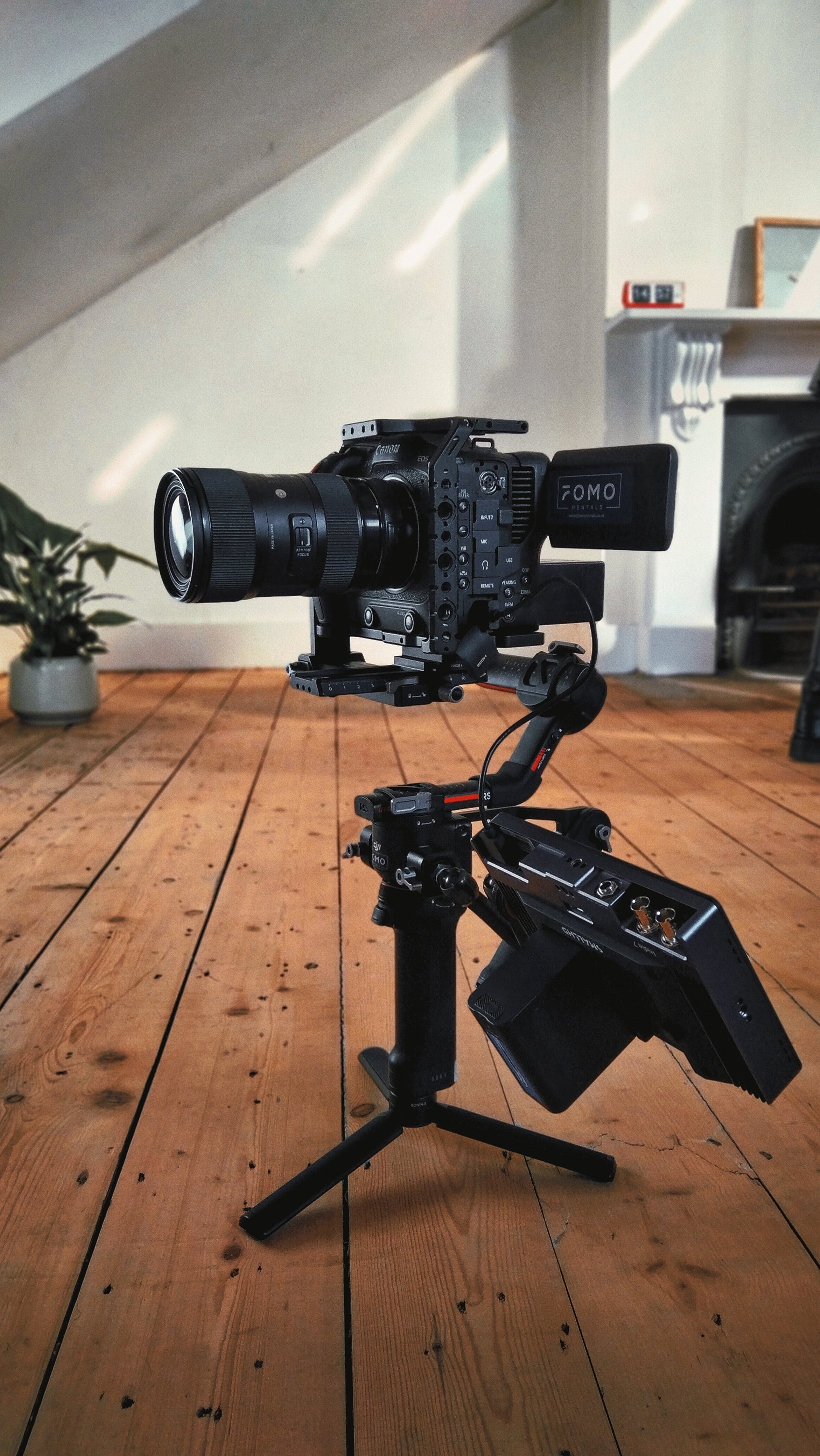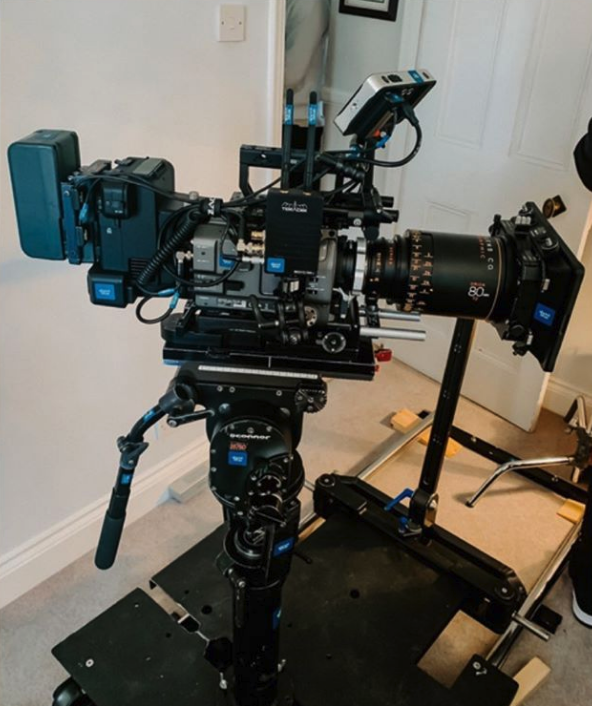Greetings and welcome to my blog!
For those who are new here, I've previously posted articles about camera and filming gear tests which can be found on the right-hand side of this article.
Recently, I had the opportunity to test the new Canon C70 and I would like to express my gratitude to Canon for allowing me to use it for a week.
I want to clarify that I am not a Canon ambassador nor have I been paid by them. This review is solely my honest opinion about the camera's capabilities and features.
Without further ado, let's delve into the details. I tested the camera for 5-6 days, both indoors and outdoors, in various lighting conditions and formats, and I must say, the Canon C70 is a significant advancement for Canon.
I used the Canon C300 mk1 for my first documentary in 2015 (available on Amazon Prime), and since then, Canon has made significant improvements, and the C70 is the latest addition to their fantastic collection of cinema cameras. The C70 shares the same C300 MkIII sensor, a 4K Super 35mm DGO sensor, which produces clean low-light image quality and over 13 stops of dynamic range. (UPDATE: see the latest camera test for Cinema Light - RAW here).
Although I did not have the opportunity to test it on an actual job, what follows is an honest and objective opinion about the camera and its features.
design
The body of the C70 feels sturdy and has a grip that resembles the Canon 1DX mk2. Holding it feels like having a large DSLR in hand, but surprisingly, it's not heavy. I believe that Canon has a better approach to usability design compared to other manufacturers.
The device has 12 distinct buttons that are pleasant to the touch, easily identifiable, and responsive. However, the button located near the thumb on the right-hand grip feels somewhat awkward, as I occasionally felt it could be pressed accidentally.
It's interesting to note that the Canon EOS C70 doesn't come with an electronic viewfinder, despite its mirrorless/DSLR design. Relying solely on the LCD screen could prove challenging, especially in bright or overcast conditions. While attaching a monitor is an option, it takes away from the camera's portability.
FEATURES
Below you can find the features of the camera
Sensor: 8.85MP Super 35mm Dual Gain Output
Lens Mount: Canon RF
Processor: Digic DV7
Video formats: XF-AVC (MXF) ALL-I or Long GOP, 4:2:2 10-bit • MP4 H.265/HEVC, 4:2:2 10-bit • MP4 H.264, 4:2:0 8-bit • 26.2 x 13.8 mm (29.6 mm on the diagonal) in 4096 x 2160 or 2048 x 1080 • 24.6 x 13.8 mm (28.2 mm on the diagonal) in 3840 x 2160 or 1920 x 1080
Frame Rates: 59.94Hz mode (59.94P / 59.94i / 29.97P / 23.98P) • 50.00Hz mode (50.00P / 50.00i / 25.00P) • 24.00 Hz mode (24.00P) • Slow-motion 4K up to 120fps • Slow-motion 2K (crop) up to 180fps (audio recording at normal frame rate possible)
Gamma curves: BT.709 Wide DR (T.709 Gamut), C-Log2 (Cinema Gamut), C-Log3 (Cinema Gamut) PQ (BT.2020 Gamut), HLG (BT.2020 Gamut)
ISO: Base ISO800 • Dual Gain Output ISO160-25600 (expandable to ISO100-102400)
Dynamic Range: 16 stops
Autofocus: Dual Pixel CMOS AF, Contrast AF (Face Priority, Face Only and Tracking AF modes available), with EOS iTR AFX (head tracking)
Controls: Peaking, waveform, zebras, false color display, markers
Shutter speed: 1-1/2000 sec depending on frame rate
Shutter angle: 11.25º to 360º depending on frame rate
Filters: Built-in ND filters in 2, 4 or 6 Stops (10 in extended mode)
Memory card: 2 x SD/SDHC UHS-II
LCD: Fully articulating 3.5-inch touchscreen • 2.76 million dots (1280 x 720 x RGB)
Connectivity: Mini XLR 3-pin connector x2, 3.5 mm audio in stereo mini jack (input only), 3.5 mm stereo headphone mini jack (output only, camera body), HDMI Type A (output only), USB Type C (USB 3.2 Gen1), Time Code BNC / HDMI, Remote A connector 2.5 mm stereo mini-jack (input only
Size: 160 x 130 x 116 mm
Weight: 1,190g (with grip belt and measure hook)
I must say I was thoroughly impressed. The design of the camera is sleek and compact, making it easy to handle and carry around. The image quality is top-notch, with sharp details and vibrant colors that really bring your footage to life.
One of the standout features of the Canon C70 is its ability to shoot in 4K at 120 frames per second. This allows for incredibly smooth slow-motion footage that really adds a professional touch to your work. The autofocus system is also very impressive, with quick and accurate tracking that keeps your subject in focus even when it's moving around. But that's not all - the Canon C70 is also a great camera to use with gimbals.
The compact design and lightweight body make it easy to mount on a gimbal, which allows for even smoother footage when you're on the move. The image stabilization is also top-notch, which means you can get steady shots even when you're walking or running.
Another great feature of the Canon C70 is its audio capabilities. The camera has built-in XLR inputs and an audio control panel, making it easy to capture high-quality sound that's perfectly synced with your video footage. The camera also has a built-in ND filter, which helps to control exposure and maintain consistent lighting in any environment.
Overall, I would highly recommend the Canon C70 to anyone looking for a powerful and versatile camera that can handle a wide range of shooting situations. Whether you're a professional filmmaker or a hobbyist looking to take your videos to the next level, the Canon C70 is definitely worth considering. And if you're looking to use it with a gimbal, you'll be happy to know that it's a great choice for that too.























